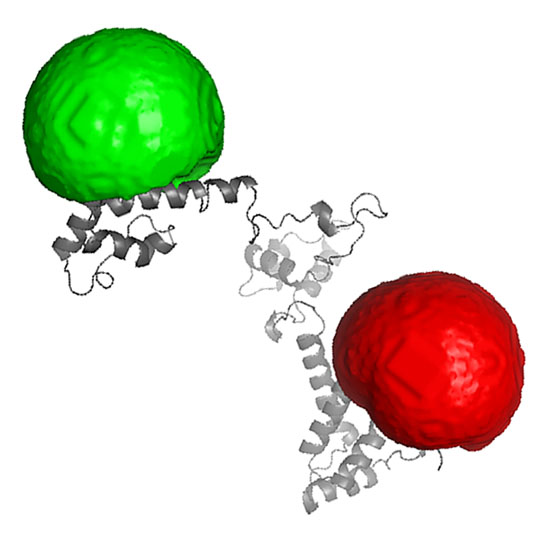Single Pair Förster Resonance Energy Transfer: A Versatile Tool To Investigate Protein Conformational Dynamics
05-Jan-2018
BioEssays 2018, 1700078, Volume40, Issue3, DOI: 10.1002/bies.201700078
BioEssays, online article
Conformational changes of proteins and other biomolecules play a fundamental role in their functional mechanism. Single pair Förster resonance energy transfer (spFRET) offers the possibility to detect these conformational changes and dynamics, and to characterize their underlying kinetics. Using spFRET on microscopes with different modes of detection, dynamic timescales ranging from nanoseconds to seconds can be quantified. Confocal microscopy can be used as a means to analyze dynamics in the range of nanoseconds to milliseconds, while total internal reflection fluorescence (TIRF) microscopy offers information about conformational changes on timescales of milliseconds to seconds. While the existence of dynamics can be directly inferred from the FRET efficiency time trace or the correlation of FRET efficiency and fluorescence lifetime, additional computational approaches are required to extract the kinetic rates of these dynamics, a short overview of which is given in this review.











